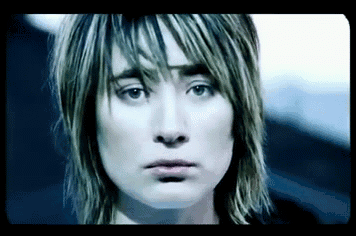i have managed to translate the 'I Colori Dela Musica Elettronica' from Italian to English, i'll be posting it in parts because it's too lengthy when typed out in full.
Enjoy the first part!

The colors of electronic music
"In space no one can hear you scream, which the universe is a variety of turquoise. American researchers have revealed that the average color, that is, the one that would be obtained if all visible light were mixed, is a greenish hue between aquamarine and turquoise. The universe has already gone through it's blue period, dominated by young stars, and is currently in it's green phase, which basically corresponds to it's middle age. In it's final phase, red will dominate"
It is with this news that a few days Warp decides to announce the imminent release of Geogaddi, the new boards of canada album. The operation, in the most classic style of the Sheffield label, triggers at least a couple of considerations in the most attentive to the iconography of the Scottish duo: the first is that taking into account the abundant use of turquoise in the covers and titles of the BoC, the news seemed almost perfectly artificial; the second, more disturbing, is that, if you look at the cover of Geogaddi - of children who go around a tree in a chromatic scale that varies from yellow to red - one wonders if this is not their definitive album. And then, before it's too late, lets tell their story.
Mike Sandison (born July 14, 1971) and Marcus Eoin (born May 27, 1973) have known each other since childhood. when, through numerous changes of residence of their respected families, from the north of England to the state of Alberta in Canada and back, they begin to play different instruments and show a strong passion for synthesizers and samplers. Their first experiments comment on visual projects, documentaries shot in a home way with a super-8. It is in homage to the National Film Board of Canada, whose films are eagerly consumed by the two and their small group of friends, that the original formation takes it's name: it is 1986 and Marcus plays the bass, but what will come in the following years it is in a certain way already anticipated by the intertwining of instruments with the sounds emitted by personal computers and with those captured by radio and television. The halo of mystery that surrounds the activity of the very first BoCs is thick and dense: it is said that they have changed formation fourteen times, that they have been a real exception - hard to be surprised, given that a fascinating anomaly they still are today - in the Scottish live circuit, having to reconcile their influences ranging from the Cocteau twins to Front 242. With the need to support an almost infinite series of cover bands dedicated to glam-rock, and that to avoid the shame they started to autonomously set up outdoor happenings, where greeted by huge bonfires, he attended film-musical installations in which old television themes or nursery rhymes of childhood memory were tortured by pressing electronic rhythms or turned over with over-insisting of messages in the backwards. What is certain is that in 1989 the Boards of Canada are now reduced to an essential core of three elements - Mike, Marcus and a certain Chris -, who decides to create his own recording studio. called Hexagon sun, in the Pentland Hills in north-east Scotland (the open countryside surrounding Edinburgh). For a long time they recorded a harvest of e.p and albums for the self-financed Music70, but none of which went beyond the narrow confines of the family circle and friendships; recalls Mike, "We've been making music since school in the 1980s and no one will ever listen to it. Our friends and families are the only ones who hear everything we write and that's what we really matters. We must remain speechless for how much material we have on tape"
i will post the next part of the translation later today.







